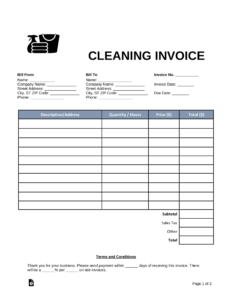Information security is a critical concern for organizations in today’s digital age. With cyber threats becoming more sophisticated and prevalent, it is essential for businesses to have a robust information security policy in place. An information security policy serves as a guiding document that outlines the organization’s approach to protecting its information assets, mitigating risks, and ensuring compliance with relevant regulations.
What is an Information Security Policy?
An information security policy is a formal document that defines an organization’s approach to managing and protecting its information assets. It sets out the guidelines, rules, and procedures that employees, contractors, and other stakeholders must follow to ensure the confidentiality, integrity, and availability of sensitive information.
The policy typically covers areas such as data classification, access controls, incident response, risk management, and employee responsibilities. It serves as a foundation for implementing effective information security practices within an organization.
Why is an Information Security Policy Important?
An information security policy is important for several reasons:
- Risk Mitigation: By defining a set of security controls and procedures, an information security policy helps mitigate risks associated with data breaches, unauthorized access, and other security incidents.
- Compliance: Many industries have specific regulations and standards that organizations must comply with to protect sensitive information. An information security policy ensures that the organization meets these requirements.
- Employee Awareness: The policy educates employees about their responsibilities in protecting sensitive information and outlines the consequences of non-compliance. This helps create a security-conscious culture within the organization.
- Consistency: An information security policy provides a consistent framework for managing information security across the organization. It ensures that everyone follows the same set of rules and procedures.
- Customer Trust: Demonstrating a commitment to information security through a well-defined policy can enhance customer trust and confidence in the organization.
Components of an Information Security Policy
An effective information security policy should include the following components:
1. Policy Statement
The policy statement should outline the organization’s commitment to information security and its objectives. It sets the tone for the entire document and should be concise, clear, and aligned with the organization’s overall goals.
2. Scope
The scope section defines the boundaries and applicability of the policy. It should specify which information assets and systems are covered, as well as any exceptions or exclusions.
3. Roles and Responsibilities
This section outlines the responsibilities of key stakeholders, such as senior management, IT staff, and employees. It clarifies who is accountable for implementing and enforcing the policy.
4. Information Classification
Information classification is a vital aspect of information security. This section should define the different levels of information sensitivity and specify how each category should be handled, stored, and transmitted.
5. Access Controls
Access control policies determine who can access specific information and under what conditions. This section should outline the procedures for granting and revoking access rights, as well as the authentication mechanisms to be used.
6. Incident Response
An incident response plan is essential for effectively addressing and managing security incidents. This section should define the procedures for reporting, investigating, and responding to security incidents, including roles and responsibilities.
7. Risk Management
A risk management framework helps identify and mitigate potential security risks. This section should outline the organization’s approach to risk assessment, treatment, and ongoing monitoring.
8. Security Awareness and Training
This section should detail the organization’s efforts to promote security awareness and provide regular training to employees. It should cover topics such as password security, phishing awareness, and social engineering.
9. Physical Security
Physical security measures are crucial for protecting information assets. This section should outline the procedures for securing physical access to premises, equipment, and sensitive information.
10. Compliance
Compliance with relevant laws, regulations, and industry standards is a key aspect of information security. This section should specify the applicable requirements and outline the organization’s commitment to meeting them.
Benefits of Using a Template
Creating an information security policy from scratch can be a daunting task. However, using a template can provide several benefits:
- Time Savings: A template provides a starting point, saving you time and effort in researching and writing the policy from scratch.
- Best Practices: Templates often incorporate industry best practices and standards, ensuring that your policy aligns with recognized security frameworks.
- Consistency: Using a template ensures that your policy follows a consistent structure and format, making it easier to read and understand.
- Customization: Templates can be customized to fit your organization’s specific needs and requirements, allowing you to tailor the policy to your unique context.
- Compliance: Templates often include references to relevant laws, regulations, and standards, helping you ensure compliance with applicable requirements.
Example Information Security Policy Template
To provide you with an example of an information security policy template, we have outlined a sample structure below:
1. Policy Statement
[Insert policy statement here]
2. Scope
[Insert scope statement here]
3. Roles and Responsibilities
[Insert roles and responsibilities here]
4. Information Classification
[Insert information classification guidelines here]
5. Access Controls
[Insert access control procedures here]
6. Incident Response
[Insert incident response plan here]
7. Risk Management
[Insert risk management framework here]
8. Security Awareness and Training
[Insert security awareness and training program here]
9. Physical Security
[Insert physical security procedures here]
10. Compliance
[Insert compliance requirements and commitments here]
Remember that this is just a sample template, and you should tailor it to your organization’s specific needs and requirements. It is essential to conduct a thorough risk assessment and consult with relevant stakeholders to ensure that the policy adequately addresses your organization’s information security concerns.
Conclusion
An information security policy is a crucial document for any organization serious about protecting its sensitive information. It provides a framework for implementing effective security controls, mitigating risks, and ensuring compliance with applicable regulations. By using a template as a starting point, organizations can save time and effort in developing their policies while benefiting from industry best practices. Remember to customize the template to your organization’s specific needs and regularly review and update the policy to address emerging threats and changing business requirements.
FAQs After The Conclusion
1. Why is it important to regularly review and update the information security policy?
Regularly reviewing and updating the information security policy is important because the threat landscape is continually evolving. New vulnerabilities, attack vectors, and regulations emerge over time, requiring organizations to adapt their security controls and procedures accordingly. By keeping the policy up to date, organizations can ensure that they address the latest risks and compliance requirements.
2. Who should be involved in the development of the information security policy?
The development of the information security policy should involve key stakeholders, including senior management, IT personnel, legal and compliance teams, and representatives from relevant business units. It is crucial to have a multidisciplinary approach to ensure that the policy addresses the organization’s overall goals, legal requirements, and specific operational needs.
3. How often should employees receive security awareness training?
The frequency of security awareness training for employees depends on various factors, such as the organization’s risk profile, industry regulations, and the nature of the workforce. Generally, it is recommended to provide regular training sessions, at least annually, and reinforce awareness through ongoing communication and reminders throughout the year.
4. Can the information security policy be shared with external stakeholders?
In some cases, organizations may need to share their information security policy with external stakeholders, such as clients, partners, and auditors. However, it is crucial to assess the sensitivity of the policy and consider any confidentiality or intellectual property concerns before sharing it. Organizations may choose to provide a summarized version or a redacted version that excludes sensitive details.
5. What is the role of senior management in ensuring information security?
Senior management plays a vital role in ensuring information security within an organization. They are responsible for setting the overall direction and tone for security, allocating resources, and making strategic decisions related to risk management. Additionally, they must lead by example and demonstrate a commitment to information security to foster a culture of security awareness and compliance throughout the organization.
Summary
An information security policy is a critical document thatoutlines an organization’s approach to managing and protecting its information assets. It is important for risk mitigation, compliance, employee awareness, consistency, and customer trust. The components of an information security policy include the policy statement, scope, roles and responsibilities, information classification, access controls, incident response, risk management, security awareness and training, physical security, and compliance.
Using a template for creating an information security policy can provide several benefits, including time savings, best practices, consistency, customization, and compliance. An example information security policy template includes sections for the policy statement, scope, roles and responsibilities, information classification, access controls, incident response, risk management, security awareness and training, physical security, and compliance.
Regularly reviewing and updating the information security policy is crucial to address emerging threats and changing business requirements. The development of the policy should involve key stakeholders from various departments. The frequency of security awareness training for employees depends on factors such as the organization’s risk profile and industry regulations.
Sharing the information security policy with external stakeholders should be done cautiously, considering confidentiality and intellectual property concerns. Senior management plays a crucial role in ensuring information security by setting the direction, allocating resources, and fostering a culture of security awareness and compliance.
In conclusion, an information security policy is a vital document for organizations looking to protect their sensitive information. By using a template and customizing it to their specific needs, organizations can save time and effort while ensuring compliance with industry best practices. Regularly reviewing and updating the policy is essential to address new risks, and involving key stakeholders in the development process is crucial for its effectiveness. With a well-defined information security policy, organizations can mitigate risks, comply with regulations, and foster a culture of security awareness and trust.





